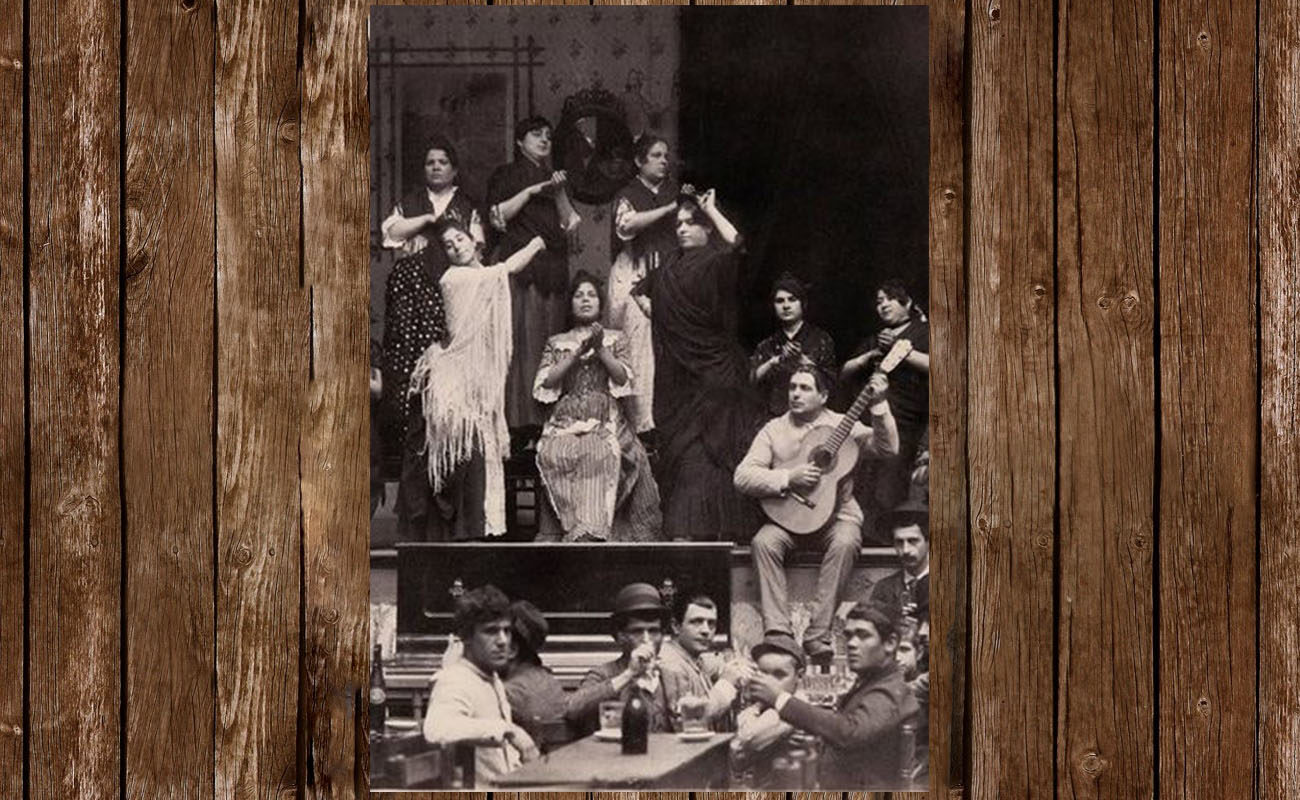Flamenco artists and entrepreneurs
How many artists became known performing in Caracol’s Los Canasteros? How many artists did Silverio discover in his business adventure, first as a manager of some venues, and then as the owner of the one he had on Rosario street, in Seville, almost until his death in 1889?

The fact that some flamenco artists did more than just sing, dance or play the guitar has never been properly researched. The role of the cantaor and entrepreneur Silverio Franconetti in the last third of the 19th century has often been highlighted, but there were many others, even before him. Let’s remember the great work of some masters of bolerosuch as Miguel and Manuel de la Barrera, who, as we learned a while ago, were not actually siblings, although this has been repeated endlessly. Both had academies in Seville (Manuel de la Barrera, from Seville, also had an academy in Cádiz), and those academies were not just schools of dance, but venues where people would come to watch performances, where, by the way, some important cantaoresbecame renowned, such as Silverio himself, José Perea, José Lorente, Ramón Sartorio, Juraco and Enrique Prado, among others.
Thus, the entrepreneurship of the Barreras was crucial for the professionalization of the artists and the promotion of what was starting to look like flamenco. Luis Botella Zurita was also bolero, besides being the manager of the Salón Recreo on Tarifa street. Luis Botella, by the way, was from Málaga and not from Seville, just like Miguel de la Barrera, who was born in Antequera (province of Málaga), where people have all but forgotten about him. Another historical artist who was also an entrepreneur was Juan de Dios Domínguez El Isleño, who managed with his son (Juan de Dios Domínguez Jiménez), the Café Filarmónico de Sevilla, besides owning a café flamenco in Huelva, emulating Silverio, who also had a café in that city for some time.
Outside of Seville, we must highlight the role of the Gypsy cantaor Juan Junquera, together with his sister Tomasa, who was also an artist. Junquera owned the Café de la Vera Cruz in Jerez, but went beyond his birthplace and also owned a flamenco venue in Utrera (province of Seville) where Don Antonio Chacón performed, among others. He also managed for some time the Filarmónico de Sevilla, one of the most important cafes in the capital of Andalusia, after El Burrero and the Salón Silverio.
As I’ve mentioned before, it’s peculiar that, although Junquera did the same as Silverio, commercialize flamenco, it has been Silverio who’s taken all the flak. Let’s not forget that they were both entrepreneurs in the same period, as they were contemporaries. Theirs was a crucial undertaking, without a doubt, because it was thanks to them that many artists got started as professionals of cante, baile and toque and later made flamenco history. The guitarist Paco el Barbero, from San Lúcar de Barrameda, one of the most influential guitarists of the 19th century, also had a tabanco flamenco on Plata street, in Seville, the same street where, a few decades earlier, Manuel de la Barrera and La Campanera had their academy. Besides, El Barbero had a guitar academy in the San Estéban district of Seville, thus he was another flamenco artist with a clear vision for businesses related with the arte jondo.
If we consider the 20th century, we’d have an endless list of artists, such as Pastora Imperio (who co-owned the Tablao El Duende in Madrid with her son-in-law, the bullfighter Gitanillo de Triana) and Manolo Caracol (who opened Los Castaneros at the Barbieri street, also in the Spanish capital). None of this has been properly researched yet, although I’ll contribute a lot of data in my book about 19th century flamenco in Seville, if I ever finish writing it. Then there were the businessmen who were not artists themselves, but greatly contributed in the promotion of this art. How many artists became known performing in Caracol’s Los Canasteros? How many artists did Silverio discover in his business adventure, first as a manager of some venues, and then as the owner of the one he had on Rosario street, in Seville, almost until his death in 1889? Not to mention Juan Junquera, a veritable scout of talent from Jerez in the last third of the 19th century.
Translated by P. Young




